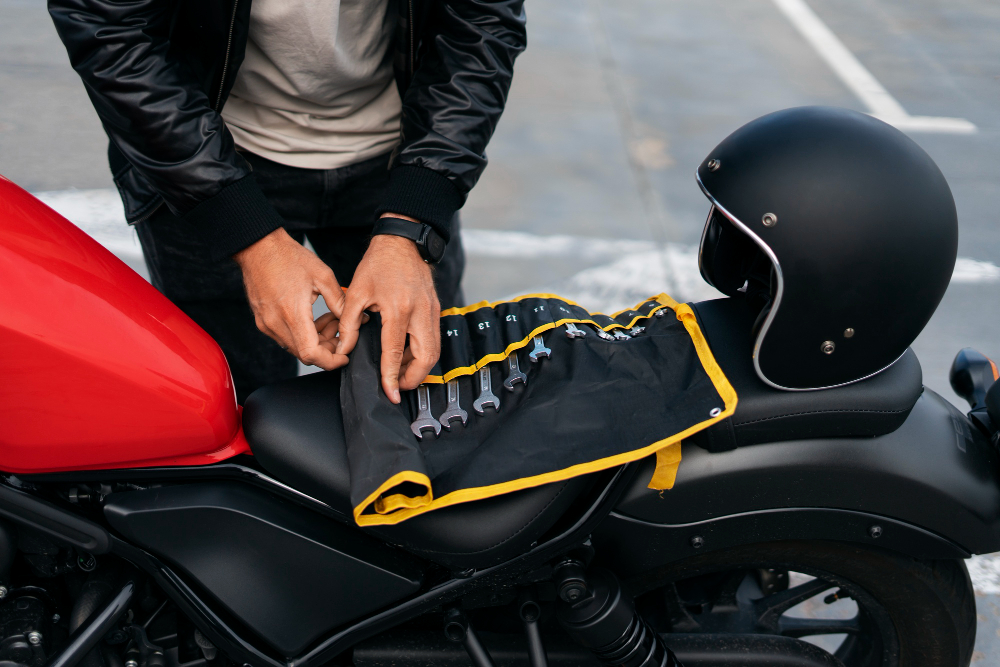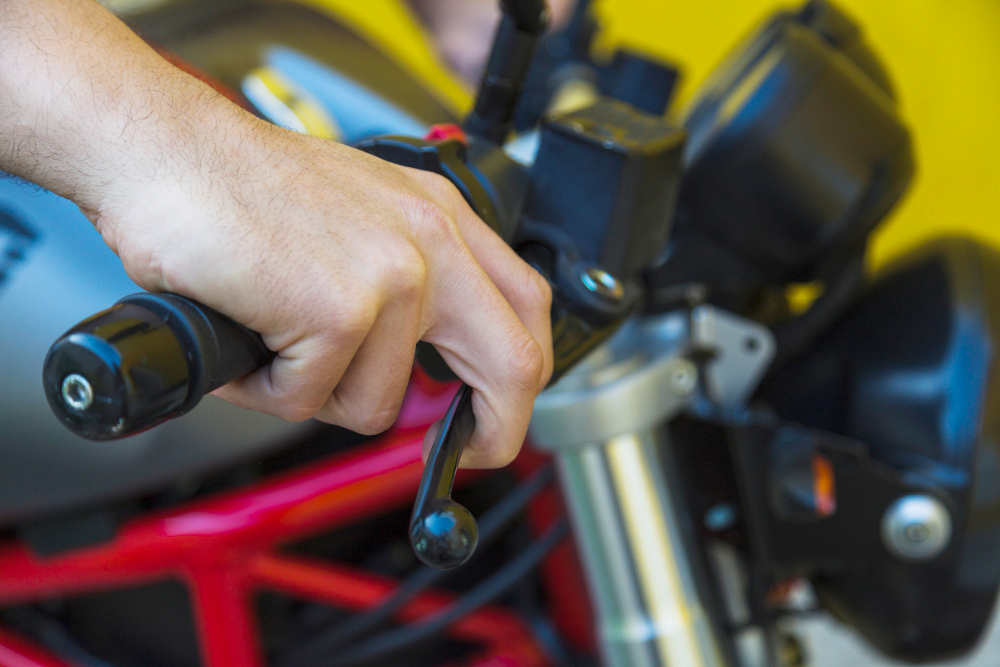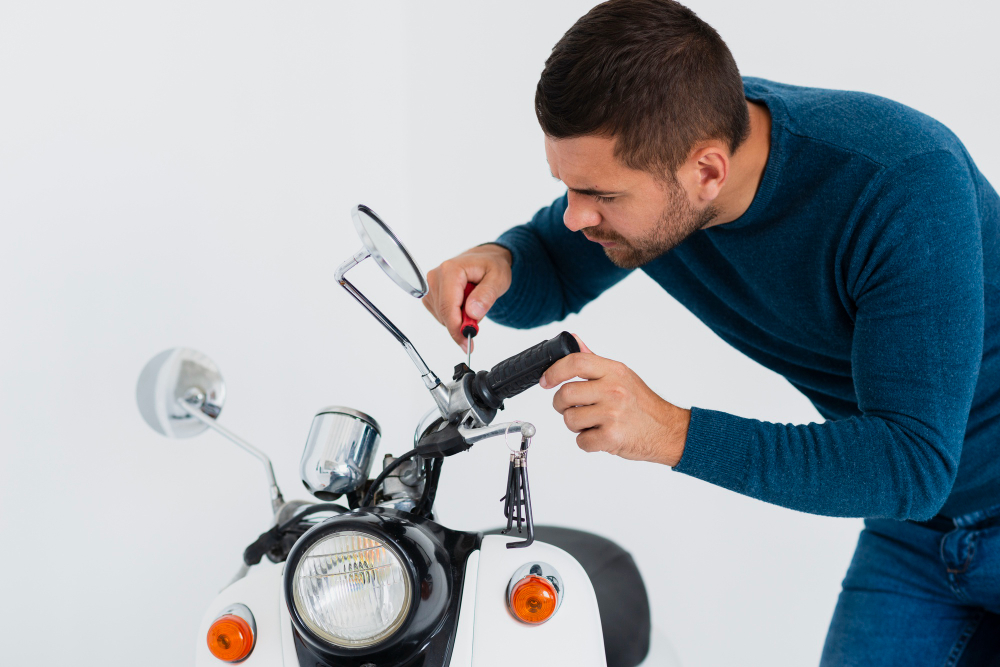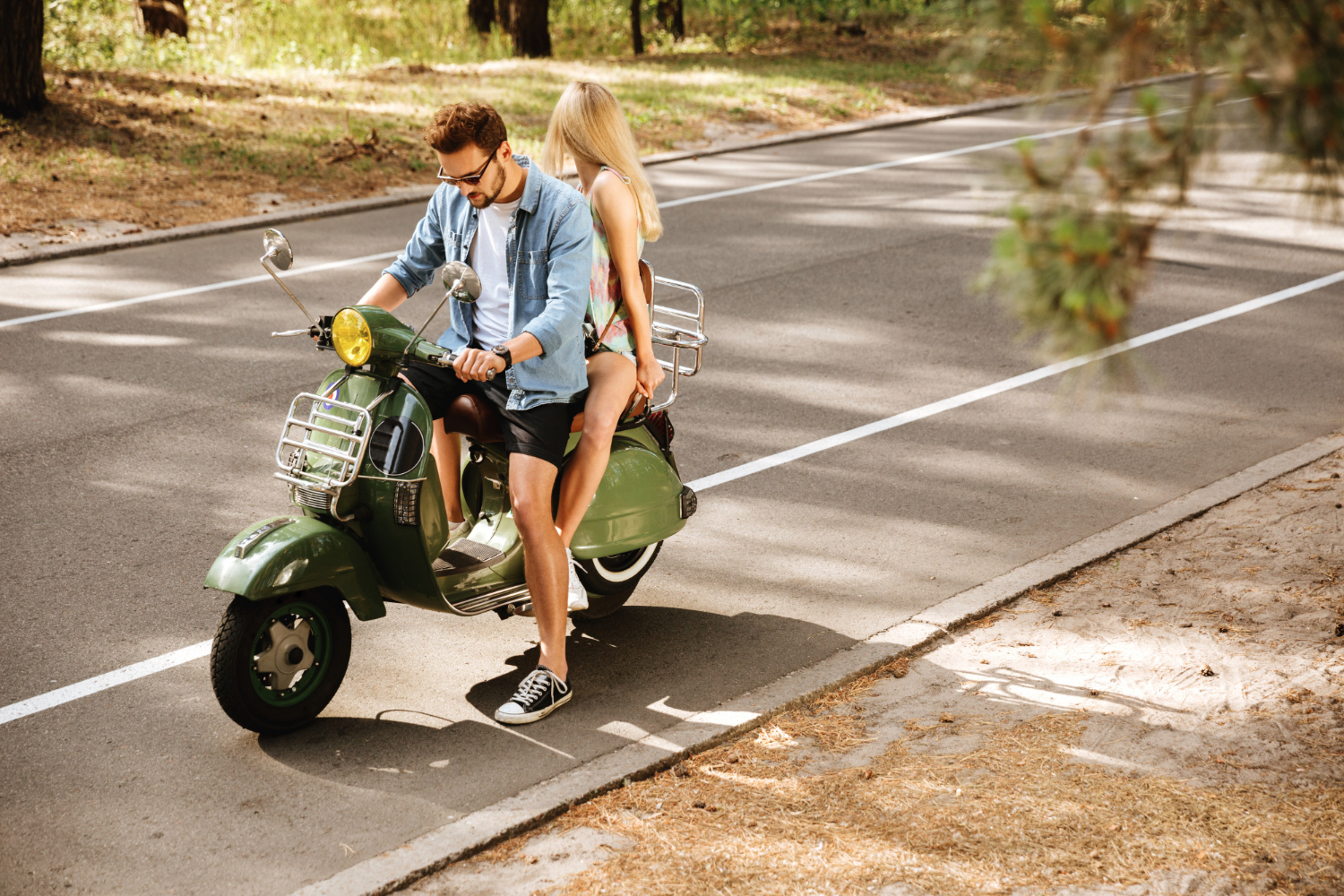Starting a moped sounds like no big deal right? But, let’s think about the non-riders or those who are just starting to learn how to ride a moped. We mostly talk about the more complex problems with a moped, which is why, even the smallest problems are often overlooked.
While this question, “How to start a scooter/moped” may sound like a silly thing to ask, there are people who don’t really know much about this stuff.
Mopeds are probably one of the best ways to travel around the Hawaiian islands. Since they have an engine size of 49cc, they are lightweight and easy to zip around in the city. Looking for an affordable daily commute option? Mopeds are your way to go!
Before you ride your moped, starting your scooter is the first and the most crucial step to a safe and enjoyable ride. If you’re having any trouble, here, in this guide, you’ll find everything you need to know. So, let’s not keep you waiting and dive into the actual concern!
Essentials To Ride A Moped

To ride a moped, you need to take care of a few essentials so you have the best time in Hawaii!
- Valid Driver’s License: This is mandatory. Check if the license includes the necessary categories that permit you to ride the specific scooter you plan to operate.
- Helmet: This is important in ensuring your safety on the road. Ensure it fits snugly on your head and is safe to use. Full-face headgear is the best.
- Insurance: Safeguard yourself and other people while riding. As a local, find out what the basic laws regarding insurance in your area are.
- Hawaii Rules: Familiarize yourself with the Hawaiian laws of riding a moped. You don’t want to keep spending on fines by breaking the road rules.
- Comfortable and Protective Clothing: Wear closed-toe shoes, along with gloves, a jacket, and long pants for added protection against the elements and potential scrapes.
How To Start Your Moped

Since mopeds come in different types, there are different ways to start your moped. We’ll go through each way and share with you the steps on how you can start it and get it riding around the island.
-Starting A Classic Vintage Moped
If you have a vintage moped, try these steps:
Step 1: If the handlebars are locked, you’ll need to disengage them first. Locate the keyhole and insert your key. Turn the handlebars slightly to the right as you insert the key, then rotate it in the lock.
Step 2: Start by turning the key to the right. Once it’s in position, press it inward, then rotate it back to the left. If done correctly, this should unlock the moped.
Step 3: Look for the labeled “on” and “off” positions, then move the lever accordingly.
Step 4: Find the engine switch near the handlebars, typically on the right side. Ensure it’s flipped to the “run” position before proceeding.
Step 5 (Optional Step): If the engine is cold, you’ll likely need to use the choke. Locate the carburetor, which will have a small black bar sticking out—that’s your choke. Press it down while simultaneously holding the small primer button on the carburetor.
Step 6: Hold the front brake (located on the right handlebar) to keep the moped stable. Next, locate the starting lever under the left handlebar. Make sure your pedals are positioned evenly, then pull the lever to start up the engine.
Step 7: While keeping the starting lever engaged, begin pedaling steadily. As you gain momentum, the engine should fire up, and you’ll be ready to ride.
Step 8: If the engine doesn’t catch on the first try, don’t worry—it might take another attempt. Try pedal-starting again, ensuring the fuel valve is open and the choke is properly engaged if needed.
-Kick Starting Or Pedal Starting A Moped
If you want to kick start or pedal start your moped, follow the given steps:
Step 1: Before getting the moped rolling, slide the key into the ignition and turn it to the right until you hear a click.
Step 2: Just like riding a bicycle, begin pedaling forward. Make sure the kickstand is up before pushing forward to gain momentum.
Step 3: Find the start button, which is usually a red switch near the right handlebar or a lever on the left. Some models come with a kick-start lever near one of the wheels—if yours has one, give it a firm tap with your foot. Press or kick to fire up the engine, but be careful not to accidentally hit the brakes while in motion!
Step 4: Locate the throttle, rest your palm on it, and gradually twist it toward you. This controls the engine’s airflow, allowing you to pick up speed as you ride.
Step 5: Once the engine is running smoothly, you won’t need to keep pedaling. Adjust your posture, focus on the road ahead, and if you haven’t already, release the start lever or button.
-Start Your Electric Moped
If you have an electric moped, these steps might help:
Step 1: Insert the key into the ignition and twist it to the right until you hear a click. That sound confirms the ignition is engaged, meaning you’re ready to move on to the next step.
Step 2: Most mopeds come with a kill switch designed to quickly shut off the engine, so you’ll need to turn it back on. Look for a colored switch near the handlebars—typically marked with an open circle (○). Flip it to the “on” position so your moped is ready to start.
Step 3: Grip both brake levers firmly, but at the very least, make sure to hold the left one—that controls the rear brake. Since mopeds tend to move as soon as they start, keeping the brake engaged prevents any sudden jumps forward.
Step 4: With the brakes still engaged, use your thumb to press the start button, usually a red one near the right handlebar. Once the engine comes to life, you can release the brakes and hit the road!
-Choke Starting Your Moped
If the weather is cold or your moped hasn’t been fired up in a while, using the choke can make starting easier.
Step 1: Make sure the ignition is switched to the “ON” position before proceeding.
Step 2 (if manual): If your moped has a manual choke, pull the choke lever up or out—it’s usually located near the carburetor. If it has an automatic choke, no action is needed; it will activate automatically when the engine is cold.
Step 3: If your model includes a fuel primer, press it a couple of times to help the fuel circulate properly.
Step 4: Most mopeds require the brake to be engaged while starting, so grip the rear brake firmly.
Step 5: While holding the brake, press the starter button.
Step 6: If the battery is weak, use the kick-start lever—push it down firmly in one swift motion.
Step 7: Allow the engine to idle for about 30–60 seconds before disengaging the choke. If the engine stalls, restart it and let it run a little longer.
Step 8: Once the engine is running smoothly, return the choke to its normal position, and you’re ready to ride!
Reasons Why Mopeds Won’t Start

Whether it’s your moped or a rented one, starting mopeds may look easy, but there are times when they just won’t start. Here are some reasons why it may happen:
Weak Or Dead Battery
If there’s no light or sound when you press the starter it may be because the battery of your moped is dead or weak. If that happens, better to replace the battery or charge it.
Fuel Issues
If your moped cranks but doesn’t fire or the engine just sputters, first of all, check the fuel level. If it’s low get fuel filled. You must also ensure that the fuel valve is open and try to clean or replace a clogged filter.
Bad Spark Plug
Mopeds won’t start if the spark plug has gone bad. This may give your moped poor performance and the engine of your moped won’t start. Best to replace the spark plug if needed.
Blocked Air Filter
The moped also struggles to start or runs rough if the air filter is blocked. If this happens then it’s time to clean or replace the air filter.
Cold Weather
The weather could also be one of the reasons for your mopeds to not start. During the cold weather, the engine oil gets thick which makes it difficult for the engine to start. Try using the choke lever to start the engine and once it starts, slowly release the choke lever.
Too Much Gas
If there’s too much gas while starting your moped, the engine can flood, meaning there’s too much fuel and not enough air, making it impossible to start.
To fix this:
- Turn off the fuel valve (if your moped has one)
- Open the throttle all the way
- Try starting the engine a few times to clear out the excess fuel
- If that doesn’t work, wait a few minutes before trying again without over-twisting the throttle
- You may also want to check the spark plug—if it’s wet, dry it off or replace it before attempting to start the engine again.
Faulty Fuel Petcock Or Vacuum Line Leak
With no fuel flow, and when your engine sputters, your moped won’t start due to faulty fuel petcock or vacuum line leak. To fix this, inspect and replace the fuel petcock or fix any vacuum leaks.
These are just some of the many reasons for your moped not to start, there may be other technical and mechanical reasons. If your moped is having difficulty in starting take it to an experienced mechanic and it should start without any hassle.
Final Thoughts: Enjoy the Ride, But Stay Safe!
Due to them being lightweight, riding a moped is one of the best ways to explore and zip around, especially in places like Hawaii. But before you can enjoy the ride, you’ve got to make sure you can actually start your moped! Hopefully, this guide has helped break down the different ways to get your scooter up and running. If your moped still won’t start, don’t stress—sometimes it’s just a small issue.
So, now that you know how to start your moped, the real fun begins—enjoy the ride, stay safe, and make the most of every adventure on two wheels!
Frequently Asked Questions
What should I do after starting my scooter?
After successfully starting your scooter, let the engine idle for a minute to warm up, especially if it is a cold day. That provides the engine oil with an optimal flow potential and makes the moped’s performance smoother when you restart it. Once the scooter is warmed up, disengage the kickstand (if applicable), check your mirrors, and slowly accelerate while maintaining control.
How often should I start my scooter if I don’t ride it daily?
It is recommended that a scooter is started at least once per week to maintain battery and engine health. Run it for a couple of minutes just to circulate the fuel and oil. If left idle too long, a scooter battery can be depleted, the fuel can evaporate and carburetor jets can become clogged, both resulting in starting difficulties.
Can I start my scooter without a battery?
Some scooters can be started using the kick-start even if the battery is dead, but this depends on the model. If your scooter relies heavily on an electric ignition system, it may not start without a charged battery. If your battery is dead, consider jump-starting it or replacing it if needed.

